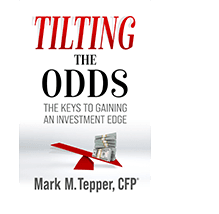Well, That Escalated Quickly
I don’t want to go into the details of the Silicon Valley Bank’s (SIVB) failure, as there are plenty of places that have at least done a decent job of that. The basics are that the bank roughly tripled assets during the venture capital boom of the last several years. They used that money to increase loans, but they also bought a lot of long-term mortgages, which they didn’t hedge. As rates rose, those showed up as a paper loss bigger than the equity of the company. Depositors, most of whom were too big for FDIC insurance coverage, got nervous and started leaving. By Friday, when the FDIC shut them down, they had -$1B in cash.
You have to wonder about contagion. While SIVB was probably in the worst shape, even the bigger banks have large unrealized losses. Bank of America (BAC) seems like the worst large bank, with unrealized losses making 43% of their total equity, as of the start of the year. As an aside, presumably the biggest loser is the Fed, as they have enormous mortgage holdings, but it’s good to be an entity that effectively can’t go bankrupt.
That’s not to say BAC is going bankrupt, just that rapidly increasing interest rates have impaired their balance sheet. There are banks investors are clearly nervous about due to similarities they may have to SIVB and the crypto-impaired Silvergate (SI.) For instance, PACW, SBNY, WAL, and FRC are some of the banks now in the spotlight. This Sunday, SBNY was shut by state regulators.

The intent here isn’t to cause or foment fear. I don’t think any of the above absolutely means there will be massive problems. We are, however, managers of risk, so it’s imperative that we recognize the landscape has changed pretty dramatically over the last week or two. Is it possible the Fed and Treasury can instill calm? Sure, but it’s also possible we see a witch hunt of the next bank at risk, or the next business at risk. Considering banking is fundamentally about confidence, that questioning process can be a self-fulfilling prophecy.
Ultimately, it seems quite reasonable to believe we’ll see the market start to re-tighten, both as fear causes deleveraging and as investors try to force the Fed to relent and pivot. And in normal times, the Fed would probably pivot pretty quickly. In this case, though, we let the inflation dragon out, and that means the Fed is kind of stuck. A pivot here and now would spell disaster for inflation, which would undo much of the Fed’s work to date.
This banking crisis may be the cause of the Fed pivoting faster than they wanted to, but first, we’d need to see some pretty bad data. Basically, we’d really need to see a lot of things start to break down, including markets. How fast can that happen, and thus, how fast could we see a pivot? That’s really hard to say. My initial guess is maybe we could see a pivot around the April CPI data and retail sales numbers that come out in May?
In the meantime, could market participants try to cause panic to force the Fed’s hand? I don’t know, but I think it’s a reasonable speculation. What could that look like? Crazy as it may sound to some, could we see the S&P 500 touch 3,000 before this is done?
To be clear, bank crises are always chaotic, where it’s hard to know what comes next. This coming week will be very important to see what the Fed, Treasury, and market participants do. Maybe nothing much escalates, and we can relax. Then again, maybe we do see increased stress, and it’s worth considering that possibility. It’s worth noting that this week also has CPI, PPI, retail sales, and Options Expiration (OpEx,) so there’s plenty of event risk out there. To add to the excitement, the next FOMC meeting is next week.
As this is being written, the situation is still very fluid. Will some other bank ride to the rescue of SIVB? We’ll hopefully have a clearer picture of what’s going on after this week. For now, there’s not much point in trying to play hero. While this could lead to a faster Fed pivot, that’s unlikely anytime soon, and historically, anticipating that event too quickly can be a very expensive game.

The latest news in this game is that the Fed invoked memories of 2008 with their BTFP lending program, which purportedly makes loans on high quality collateral. Realistically, this seems to be a bank bailout program to make banks temporarily whole on Treasury and mortgage losses.
There are a variety of problems with this plan, much like we saw in 2008. First, the $25B facility is supposed to adequately cover the $18T in deposits at banks. Should we note that $42B got drained at SIVB? Next, with the backstopping of all depositors, the precedent has been set that all depositors will be protected, so the FDIC insurance limit is meaningless. That cost will be covered by a special assessment of the banking system, meaning good banks have to pay for the mistakes of bad banks. Lastly, if this is like the 2008 programs, these will be a tremendous stigma attached to actually using the facility, as it’s a sign the bank is in deep trouble. It’s more of an inducement for banks to raise capital, than anything.
As of Sunday night, markets are celebrating the Fed rescue plan. Having seen this movie before, I have to wonder for how long that lasts. Can we even make it through Monday without some amount of retracement? I don’t think there’s a rush to play Johnny football hero. This is essentially an issue of duration mismatch, and that hasn’t gone away. Japan is one of the first markets open, of course, and there’s no party over there. This seems like a good time for both bulls and bears to be careful.
 Enter your information below, and we will email you our new eBook, Tilting the Odds
Enter your information below, and we will email you our new eBook, Tilting the Odds




